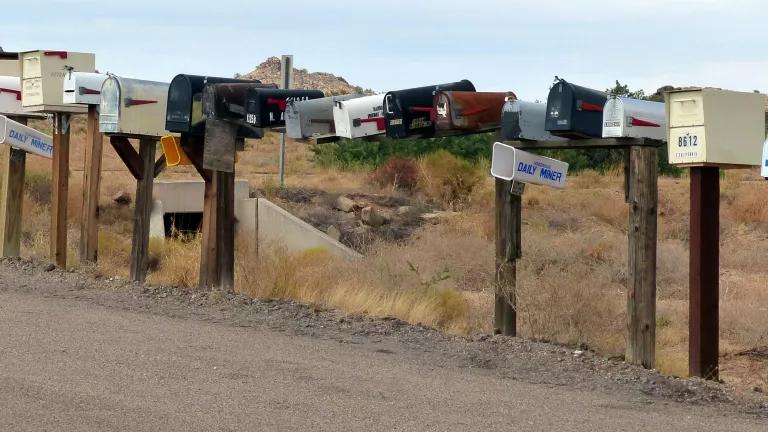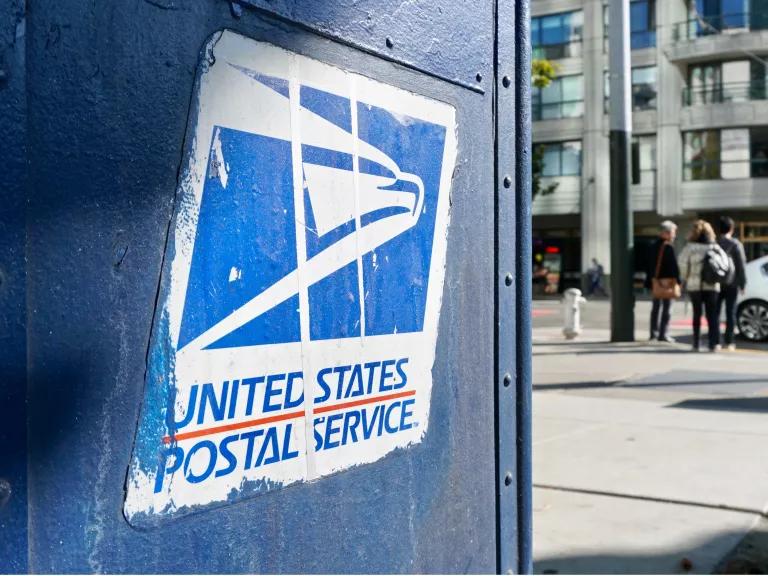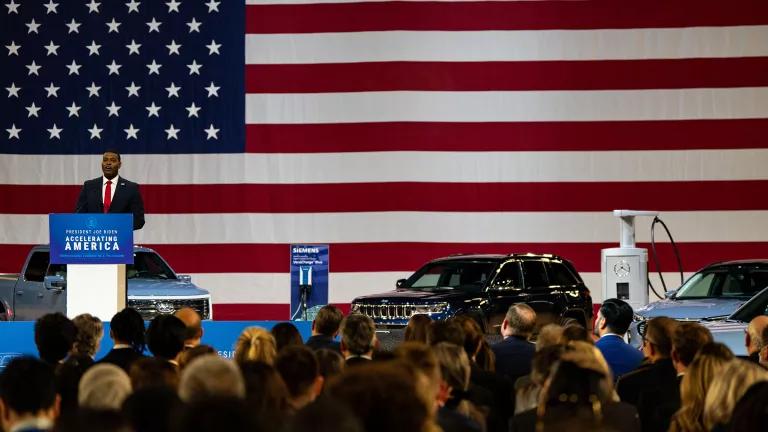The Post Office Tries to Keep Delivering Pollution
The USPS wants to replace its aging fleet of delivery trucks with more fossil fuel trucks instead of EVs—a huge missed opportunity.

Photo by Philippe Krief on Unsplash
The U.S. Postal Service (USPS) plans to replace its aging fleet of delivery trucks, but instead of investing in zero-emitting vehicles, it’s refusing to fully shift to electric vehicles. In fact, under its plan, 90% of those new trucks will be dirty, fossil fuel vehicles that will continue to pollute the air we breathe.
It’s time for the USPS to shift gears and deliver a plan that will save money while delivering cleaner air.

Photo by Tareq Ismail on Unsplash
The USPS proposal is a massive missed opportunity. Electric vehicle technology today—let alone in ten years when the final delivery vehicle purchases occur—can power the overwhelming majority of USPS delivery routes while saving the agency money. What’s worse, the proposal completely lacks any rigorous analysis, instead making three unsubstantiated claims about charging infrastructure, operational suitability, and cost. The USPS also disregards the emission reduction benefits from EVs to address climate change and air pollution.
Fortunately, these mistakes can and should be corrected in a new proposal. In our comments to the post office, we laid out where the analysis fell short and how it can be fixed.
EV Charging Infrastructure Needs to be Better Understood
The USPS acknowledges that new charging infrastructure is needed and points to infrastructure costs as a primary barrier to deploying electric vehicles. But the ease and cost of installing infrastructure are largely location-specific, depending on the existing distribution system, the number of desired charging stations, supportive utility programs, and local permitting processes. However, according to USPS, “...facility locations where new vehicles would be deployed and where alterations may be needed are not known at this time,” and “[t]he extent and types of alterations necessary for each Postal Service facility locations are not known at this time.”
Since the proposal failed to evaluate where EVs would be deployed and which facilities would be altered, the USPS clearly does not understand whether charging infrastructure is actually a barrier.
The Vast Majority of Delivery Routes are Suitable for Electrification
The agency claims that 12,500 routes cannot be electrified based on the assumed 70-mile range of EVs. This is a bizarre argument on many fronts.
First, electric vehicle’s ranges now far exceed 70 miles. For example, the Ford Lightning Electric Transit Cargo Van is available with 140- and 170-mile ranges, and can fully charge in under three hours using a DC fast charger. And, as the technology develops, battery range is going to continue to rise.
Second, even if you accept the USPS numbers, these 12,500 unsuitable routes for EVs represents less than 6% of all USPS delivery routes. So at least 94% of the current 231,579 USPS delivery routes are well suited for electrification.
So, to recap: Under even the most limited assumptions by USPS, 94% of its routes could be served by electric vehicles, but USPS is proposing to purchase just 10% of its fleet as electric.
USPS’s Cost Calculations are Unsupported and Ignore the Best Available Information
USPS claims that EVs have a higher total cost of ownership over their entire lifetime compared to fossil fuel vehicles. However, other than topline cost numbers, they provided no details on how they came to this conclusion. The proposal offers little insight into total cost of ownership calculations performed except to generally say the USPS “evaluated proposals to determine which offeror provided the Postal Service with the best value by weighing technical evaluation factors/risk and the Total Cost of Ownership (TCO).” This statement belies rigor, objectivity, or rationality. It also ignores the best available data and latest research.
Numerous studies have compared the lifetime costs of EVs and fossil fuel trucks, and the overwhelming consensus is that short-haul electric delivery vehicles are cost-competitive with their fossil fuel counterparts. In fact, EV delivery trucks are often considered the most cost-effective electrification opportunity in the near term. For example, a recent comprehensive TCO analysis by the California Air Resources Board (CARB) found that electric cargo vans—similar to those used by USPS—would save fleets almost $5,000 over the vehicles’ life if purchased in 2025. Moreover, these savings are expected to grow as EV technology matures through 2030.
EV cargo vans save fleets money through lower service, maintenance, and fuel costs over the vehicles’ lifetime. Since EV cost savings are strongly influenced by the number of operational years, longer-life EVs, such as USPS delivery vehicles, can expect to earn even higher returns on investment.
USPS Doesn’t Appropriately Value EVs Emission Reduction Attributes
Transportation is the single largest source of greenhouse gas emissions in the U.S. Yet, the USPS proposal ignores the climate and air quality impacts of transitioning to zero-emission vehicles and fails to factor in the inequitable harm caused by fossil fuel pollution.
Fossil fuel vehicles emit large quantities of nitrogen oxide (“NOx”) pollution, which contributes to the formation of particulate matter pollution (i.e. soot) and ozone (i.e., smog). Soot and smog are hazardous to those closest to the source of pollution, leading to premature death and other devastating health impacts, including asthma and respiratory diseases, pregnancy complications, cardiac and vascular impairments, and heightened cancer risk. Emissions from fossil fuel vehicles disproportionately hurt low-income communities and communities of color that often live adjacent to freight hubs, such as freeways, ports, railyards, and warehouses. What rudimentary emission comparison the USPS does, undervalues the benefits from EVs and overlooks the negative impacts from new fossil fuel vehicles.

Photo by Victória Kubiaki on Unsplash
To make matters worse, climate and air pollution appear to be ignored by USPS. Air pollution reduction benefits are not calculated and USPS ignores key context such as avoided hospital visits or avoided respiratory and cardiovascular diseases. Including monetary values for these would further demonstrate the benefits of EVs relative to fossil fuel vehicles.
We Can’t Afford to Miss the Moment
Replacing USPS’s antiquated delivery fleets represents a unique opportunity for the USPS to take meaningful action to address climate change and reduce pollution from the transportation sector. Failure to maximize the number of EVs in the USPS fleet will lock in decades of fossil fuel vehicles operating in communities across America, resulting in higher maintenance and fuel costs, worse air quality, and increased climate impacts.
In considering the fleet of the future, the USPS calculations of charging infrastructure needs and costs, electrification feasibility, and total costs were unsubstantiated, ignored best available data and technology, and failed to include emission reduction benefits.
Moving forward, the USPS must correct the errors in its analysis and present these corrections in a new proposal that complies with all federal laws and draws conclusions appropriately based on the long-term stability of USPS finances, the environment, and public health.




